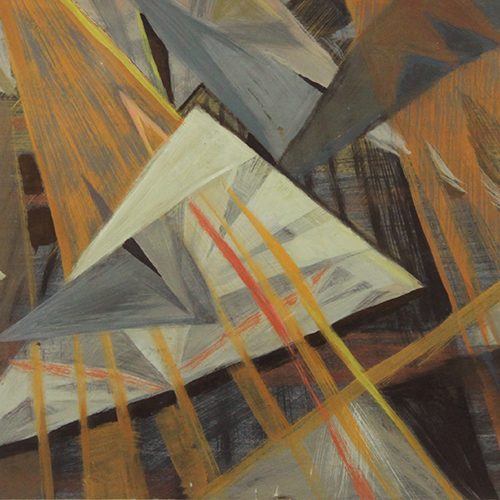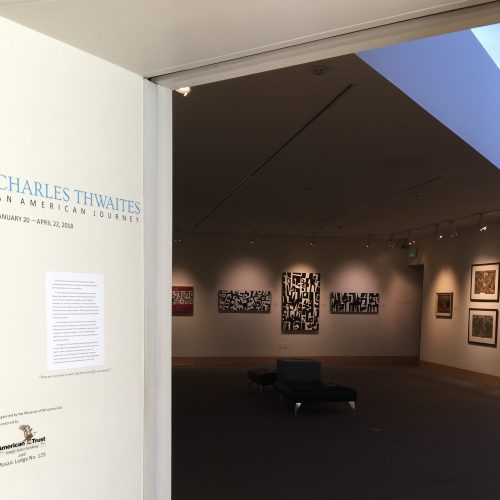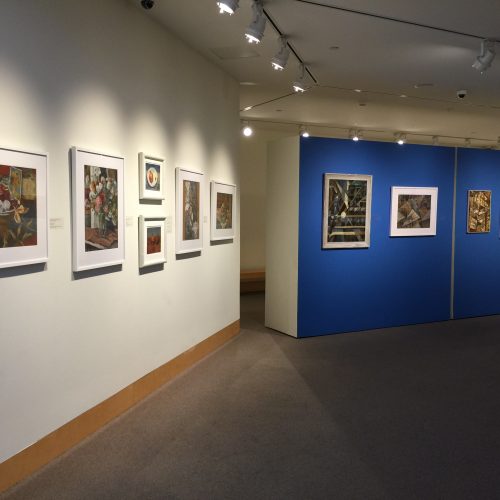This major retrospective of Wisconsin artist Charles Thwaites (1904-2002) seeks to reintroduce the works of a pioneering figure in 20th century American art to a new audience.
Charles Thwaites was the rare artist who excelled at both realist and abstract styles. The Museum of Wisconsin Art’s (MOWA) Director of Collections and Exhibitions Graeme Reid, who also curated this exhibition, has long championed Thwaites’ painting: “It’s exceptionally rare for any artist to be so successful in one style and make a smooth, almost effortless, transition to another. Whether it was realism or abstraction, Charles Thwaites could do both with confidence and originality.”
Most of the 43 paintings, drawings, and prints in this exhibition are drawn from the collection of MOWA in West Bend, Wisconsin, home of the artist’s estate. The Dubuque Museum of Art (DuMA) proudly includes a portrait from Thwaites’ Taos period, originally donated by the artist to the Museum and recently restored thanks to donations to DuMA’s Conservation Corner.
Thwaites briefly lived in Dubuque in 1928, serving as director of the Dubuque Little Institute and teaching at the Dubuque Art Association (forerunner to DuMA) while finishing his art degree. By the mid-1930s Thwaites had become one of the best painters in America, exhibiting at prestigious venues such as the National Exhibition of American Art at the Rockefeller Center, New York (1936, 1937, 1938); Corcoran Biennial, Washington, DC (1939, 1941, 1947); Annual Exhibition of American Painting and Sculpture, The Art Institute of Chicago (1937, 1941, 1942); and the Artists for Victory show at The Metropolitan Museum of Art, New York (1943).
While living in Milwaukee in the 1940s, Thwaites and his wife, Antoinette Gruppe, began regular visits to New Mexico and moved to Taos permanently in 1954. The move marked a fresh chapter and a significant artistic shift for Thwaites, particularly as the realist style he had mastered was falling out of favor. Thwaites slowly transitioned to abstraction and became a member of the “Taos Moderns” group. During the 1960s and 1970s, Thwaites produced purely abstract work but ceased to paint by the early 1980s. When he died in 2002, his name had faded from both the Southwestern and Wisconsin art scenes, rendering him a forgotten man in both New Mexico and his home state.
The journey Charles Thwaites undertook over the course of his life was not just one of physically relocating from one state to another, but from one culture and one artistic style to another.
“There are 1,000 ways to paint, why limit yourself to one manner?”
Charles Thwaites, 1947
RELATED PROGRAMMING:
- Exhibition Opening & Member Preview
Friday, January 19, 5 pm
- Gallery Talk with Graeme Reid
Sunday, March 18, 1 pm





